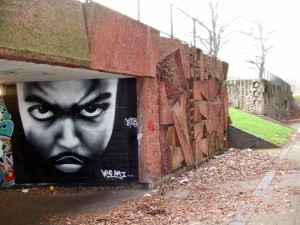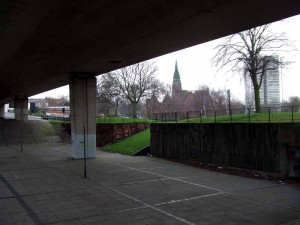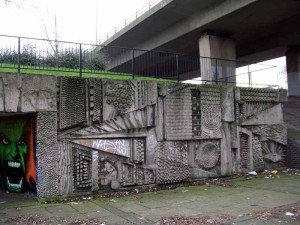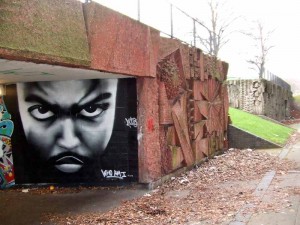Alan Clawley shares some views of Birmingham’s semi-subterranean pedestrian history.

Now imagine starting the other way round and giving pedestrians top priority. The highway engineer would then be asked to work around the primary needs of walkers. Colin Buchanan recommended this idea in the ‘60s and in Birmingham it resulted in the Central Library pedestrian concourse.
Outside the city centre some highways remained literally on top below which, in a brave effort to make life a bit nicer for pedestrians, the city engineers commissioned artists to install murals on the walls of the subway tunnels and retaining walls. Many of these, such as Kenneth Budd’s mosaic mural of J F Kennedy in St Chads Circus, have since been removed or destroyed with the subways which they once adorned. Luckily, the artist’s son, Oliver Budd, has been restoring what was salvaged of his father’s mural and he hopes that it will find a new home in the Irish Quarter of Digbeth.


Hatherley writes (pp110-11); ‘Hockley Circus’s bench-lined open space feels like it was built for sound systems with basslines bouncing between the concrete sculptures and stanchions, although that seems doubtfully part of Mitchell’s (or Manzoni’s) intention’.
Hockley Circus is only five minutes walk from Jewellery Station and a visit can easily be combined with a walking tour of the Jewellery Quarter and Key Hill Cemetery. Mitchell’s other work in Birmingham is on Quayside Tower in Broad Street (Madin 1966) and on the main doors of the former NatWest Bank (Madin 1975) in Colmore Row.
